Becoming strong doesn’t happen overnight. Strength is a skill, and with any skill, you must put in the time to become better. No matter what skill you choose to take part in, it takes a commitment to work diligently to improve it, prioritizing the importance of a high-quality product.
We have all heard the phrase, “Practice makes perfect.” I believe it should be stated, “Practice makes permanent.” If you practice a skill with bad habits, they will show up negatively when it matters most. Same goes with the opposite. If you practice with the mindset to become better and work toward honing your skill set, you will reap the rewards.
Strength training should be considered practice—more importantly, a skillful practice. By prioritizing key fundamentals of lifting in your training session, you will achieve a high-quality product. You will get both the results you are looking for and minimize the risk of injury. You will become strong.
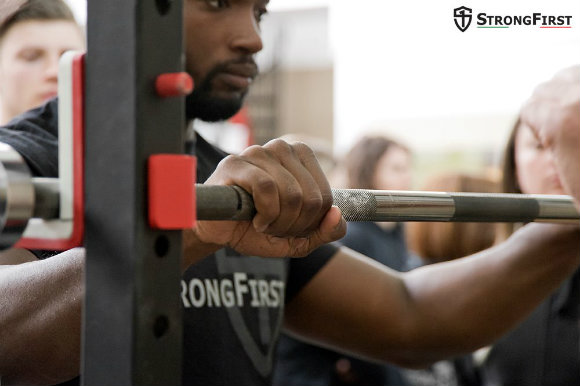
2 Key Principles as Taught by Pavel
1. Quality Over Quantity
At my first Kettlebell Certification, Pavel talked about focusing on the quality of every rep. And he advised that we should put the bell down when we still had a couple left in the tank. The emphasis was on achieving the quality of repetitions over the quantity of them.
So, instead of doing one set of fifteen, do fifteen sets of one. By spreading the load through more sets, the quality of every rep can be pursued more easily. Keeping the reps minimal and building up your sets also allows you to lift heavier weights frequently at a higher percentage of quality.
2. Inch Wide, Mile Deep
Pavel also mentioned the phrase, “Inch wide, mile deep.” Instead of doing many different exercises in your program, focus on just a couple. Spend your time working on perfecting those lifts by digging deeper to refine them. Calibrate every rep in search of the perfect one.
The use of these principles has been the foundation of my strength practices, which influenced me to come up with the following strength program.
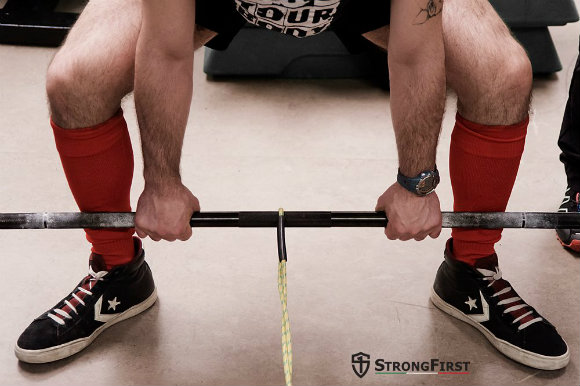
The “Quality a Mile Deep” Strength Program
I have put together a strength program based on the above two principles. You will focus on building quality, then quantity. The result is building some solid strength a mile deep.
You will focus on one lift a day with only a couple accessory lifts to finish the training session. At the end of the program, you should be able to lift more sets in a higher percentage of your one-rep maximum by making sure there are always one to two repetitions left in the tank. You will build strength without compromising any technical breakdowns due to fatigue.
Here is how it works:
- You select four barbell or kettlebell lifts to base the program around and do them for twelve weeks. Any four barbell or kettlebell lifts you want to improve your skill on can be used.
- For each lift, you will pick a rep scheme of 5, 3, or 2 to use in four-week blocks. There is no prescription as to which rep scheme you use first for each lift. You will stick with the same rep scheme for the lift, but add one set per week. After those four weeks, you will switch to a rep scheme you have not done before for that lift—still choosing from either 5, 3, or 2.
- Follow the progression of sets as you did in month one. After twelve weeks, you will have done the rep scheme of 5, 3, and 2 for every lift.
- Split the week into two parts, both part having an upper- and lower-body lift. Since you only have the reps 5, 3, and 2 to work off, you need to pair one upper and lower lift together with the same reps and sets for the full twelve weeks. (I paired the military press and the deadlift together, but I could have also used the squat and bench. In that sense, this is more of a template than a program because you can plug in different lifts and rep schemes around what you would like to work on.)
Here is an example of the lifts, sets, and reps with the total amount of reps done for the month.
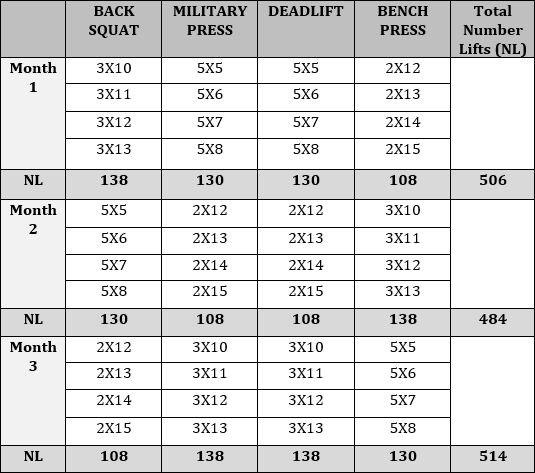
How to Choose Your Loads
The beauty of this strength program lies in how you design the sets. You have the freedom in what weights to choose and how to scale your load. Since the reps are low, it’s up to you to be honest with yourself and make sure you can complete each set. Don’t try to lift a weight that becomes so hard that your form breaks down. Just remember, you always need to make sure there are one to two reps left in the tank.
In each of the three possible rep schemes, you need to stay between a certain percentage of your 1RM. Here’s how it works:
- Reps of 5: 60-80% of 1RM
- Reps of 3: 70- 80% of 1RM
- Reps of 2: 75-90% of 1RM
How to Plan Your Accessory Work
Each training session is dedicated to practicing your lift for the day and making it better. After you have completed your main lift for the day, you will add in some accessory lifts.
These lifts are intended to assist your lift of the day, not to replace it. They are meant to help with any issues in the movement or to help with a sticking point. You can choose among kettlebell, barbell, and bodyweight exercises to help with the main lift. Since there are many variables to each lift, I’ll leave the choice up to your imagination. If you are not sure which exercises to add in, a heavy dose of swings and get-ups usually works just fine.
The number of your accessory lifts will depend on your main lift rep schemes for that month. Here’s what I recommend.
- 5 reps: 2-3 accessory lifts
- 3 reps: 2-3 accessory lifts
- 2 reps: 1-2 accessory lifts
The number of sets and reps you do for accessory work depend on which rep scheme you do for the month. Here is what I recommend:

Conclusion
Following this plan will get you strong without compromising form. You will be able to lift heavier loads, push your limits safely, and also build some toughness. By the end of the twelve weeks, you will become more efficient lifting heavier loads and become a dominating force for the world to endure.
You will build quality a mile deep. You will become STRONG!
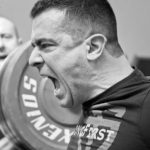

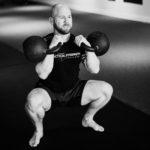


Hi Mike,
Absolutely can see how and why this fantastic plan can work.
1 question. Would you reckon putting all four lifts in the 5 than 3 than 2 region respectively rather than the stated plan of 2 lifts at 5’s amd 2 lifts at 2’s on the first month for example?
Myren
Mike:
This may be a dumb question, but …Are you picking, and sticking with, the same weight throughout the 3 month cycle? i.e., the variables you’re playing with are number of sets, and number of reps… but all at same given weight, correct?
Greg
Greg you have the freedom to move around and use different weights that are in the recommended percentages. You can change them every set, or you can use the same weight for every set. The main goal is to always have a couple reps left in the tank every set. So you can keep moving up until you feel that you are at a weight that is challenging but not difficult. Once you are there, try and make the reps look better.
Mike,
An excellent plan. I will start this on monday. Ive been lifting for 15 years and love trying something new. Your plan is similar to one Ive seen in Mark Rippetoe’s book, but I like this one because it doesn’t have me at the top of my weight threshold for every lift. His also has fewer sets and longer rest times (only 5 sets and 10 min rest in between). Hopefully I can get through your workout in less time than Rips! Thanks for posting this.
Just confirming, for the accessory reps do you use the load as the reps scheme?
Reps of 5: 60-80% of 1RM
Reps of 3: 70- 80% of 1RM
Reps of 2: 75-90% of 1RM
Thanks
-Tom
Mike,
Assuming 3-5 min rest btw sets on the main lift? Thanks.
Yes around there. Just when you feel ready and know you can complete the set then start the next set.
Super effective and very easy to follow!
At 54 years old, I can only offer this to my younger counterparts.: Concentrate on your form above all else…Today’s show-offs will have tomorrows injuries…Don’t go there!…
Remember, you will get here one day…Don’t let me hear that you don’t train any more because of injuries!
That’s the #1 excuse I get from guys my age…BS, I say, BS!
Train smart!
Exactly. This program isn’t about chasing a number. It’s about becoming more efficient in your lifting
I’d have to agree with the last poster as far as the reps and sets…it’s just the one sentence makes you question it. At any rate, the rep and set schemes make sense now. I also like Pavel’s other concept of “GTG” (“grease the groove”). This works as you know you could spread that set load over the course of a day so you don’t do it all in one session.
I do have a separate question about your program. Can you focus just on two barbell lifts (say deadlift and squat) and not have to do two more (I don’t bench press anymore after tearing my chest muscles)? So I could do deadlift one day and squats the next and then work on something else the other two days, then come back to deadlifts and squats the next week, correct?
Thank you for your article and your posts. I look forward to seeing more of your insights! 😀
John thank you . Yes you can do only 2 barbell lifts. I would recommend using the other 2 days with a kettlebell. So if you are going to squat and deadlift with a barbell, then you can do presses and gets ups with a kettlebell the other days. Also pull ups can be very effective in this program.
Mike,
Do you recommend using the same weight for each working set? Would it be possible to work up to a few sets for a daily max?
Jeff you will work up to the highest % in each of the rep range but always making sure there is 1-2 reps left after every set. Don’t go to failure, but make sure that you know you can do it again and again and again… By doing this you will be able to lift heavier more frequently
Mike,
This looks really interesting. Two questions: how do you determine how many sets to do and what do you recommend for warm-ups? Thanks again!
Hello Rick. You follow the progression of sets on the table. I guess it should’ve stated the weeks instead of each month.
You start the session with the lowest percentage for that rep range and move up from there. Keep moving up if you feel that there is still 1-2 more reps left. You can wave the load however you choose but you just should always have a couple reps to spare. By the end of each month, you should be able to lift more sets in the higher percentage of that rep range.
Warm up sets will vary on each individual. You should use you your warm up sets to find your proper groove and to find any issues in your lift. Once you feel comfortable then proceed to the working sets.
Seconding Rick’s question. Example: in the 10 sets of 3 back squats, how many of those sets are progressive warm-ups and how many are at the “work” percentage? Thank you.
Fran all the sets that are listed are the working sets. As far as your warm up sets that just depends and the experience of the lifter. If you have been lifting for a while and have your groove set in, then you won’t need too many warm up sets.
Rick all the sets listed are the working sets. Your warm up sets just depends on the experience of the lifter. I would recommend 3-4 sets at double the reps for a warm up. Using around 40-50% of your 1RM
Mike great article. I’m using a similar program on an 8 week cycle. When I get to my 3×3 I will be up to 89% and 2×2 at 95% of my 1 rep max. Too aggressive? or ok because of less weeks? Thanks for any advice.
Jacqueline
Jacqueline it sounds like you are doing a linear cycle. Is that correct? Nothing wrong with it at all. This program is really good for after you hit a peak cycle.
Yes, linear, thanks. The end is near.
And yes I did finish a peak the cycle before.
Are you saying for instance 12 sets 2 13 sets of 2 and so on. I am not following your format is the front number sets or reps.
Yes Scott that is correct. Reps first then sets.
I noticed the same thing. He either wrote it wrong or it came out wrong, as if you read “sets and reps” it would show 3 x 10, then 3 x 11, etc. and that would indicate 3 sets of 10 repetitions. After re-reading it a dozen times, that should read 10 sets of 3 repetitions, indicating the first number is the reps, and the second number is the repetitions. Without making that fix, it is pretty incomprehensible.
David it is written from the format of Pavel’s Plan Strong which describes the reps first then sets. If you read the prescribed repetitions then it should be pretty easy to determine which is the reps and sets.
I didn’t think it was that difficult to figure that out. But I read the words.
Good read!
Thanks Scott